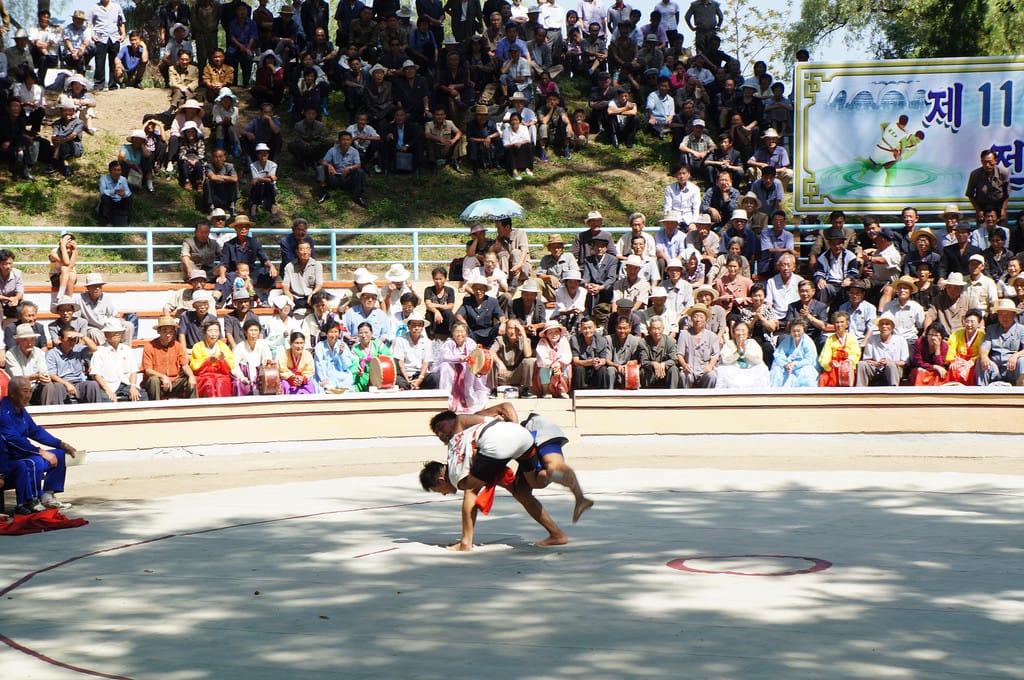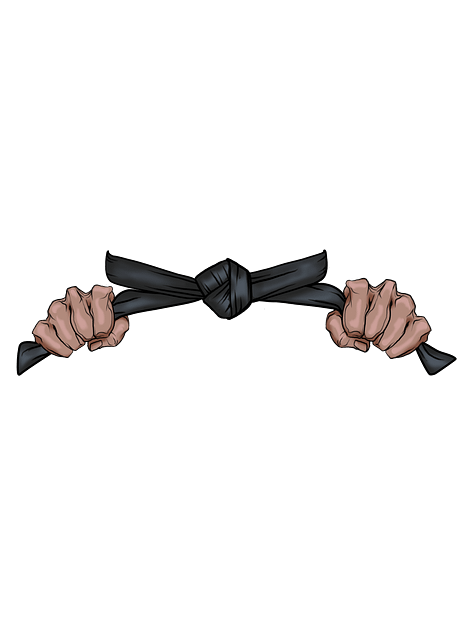As with all of these articles, just in case it’s your first, I’ll start with the very basics for the unintiated; what is wrestling. Wrestling is a combat sport that involves grappling techniques such as clinching, throws, takedowns, joint locks, pins, and basically any other kind of grappling hold you can think of. There are theatrical types of wrestling, as well as genuine competition. The range of styles is almost as varied as the range of rules, with both ancient, traditional styles existing alongside more modern ones.
It represents one of the oldest forms of physical combat, and it’s origins date back to at least fifteen thousand years ago through cave drawings in france. Many Egyptian and Babylonian reliefs also show wrestlers using holds known in the present day.
Now, with that out of the way, we will be discussing a folk wrestling style that started in Korea known as Ssireum.
The History of Ssireum
Ssireum, or korean wrestling, is a traditional national sport of Korea, and has been since the fourth century. The earliest evidence of ssireum dates back to the Gorguryeo period, and was originally used in military applications. The sport then became a popular pastime of the nation, including Korean kings during the Goryeo and Joseon periods.
Ssireum was a popular activity on the holiday of Dano, the fifth day of the fifth lunar month, and tournaments are held in the summer and autumn. Ssireum competitions were also held on other days, such as the Third Day of the Third Moon, the Eighth day of the Fourth Moon, Buddhist All Souls’ Day, etc. The traditional prize in the past for the tournament was an ox, an obviously valuable commodity in a farming-oriented society, which also symbolzied the contestant’s strength.
In the 20th century, the sport became nationally televised in South Korea. The first modern comeptition was held in 1912 at the Dansongsa theater in Seoul. Weight classes were introduced at the 12th National Ssireum Championship Contest, and revised in the sixties. The competition used to have two distinct styles, but in 1994 the Korean Ssireum federation proposed the unification of the two, and it was adopted as the official, universal style.
The Rules of Ssireum
Ssireum, on it’s surface, has a lot in common with sumo wrestling. It’s conducted in a circular ring, about seven meters in diameter, and covered with mounded sand. The two wrestlers start the match in a kneeling position with each grabbing the other’s belt, called the satba. The satba is a belt which is wrapped around his opponent’s waist and thigh.
The wrestlers then rise while retaining their hold in the other’s satba, and the match is awared to the wrestler who forces the other to touch the ground with any part of his body above the knee. But, unlike sumo, pushing your opponent out of the ring does not warrant a win, just a restart. The matches are usually conducted in a best-of-three style.
In the past, only males were allowed to wrestle. But today there are also women Ssireum wrestlers. Women wrestle only among themselves but follow the same rules (except that men are topless whereas women wear tops).
Unfotunately, the professional league is dwindling in popularity and many wrestlers have turned their attention to mixed martial arts fighting, even though Ssireum involves no striking or submissions of any kind, as a means of making a living. Choi Hong-man, former champion of Ssireum, is enjoying notable success in the K-1 scene.
But unlike sumo, Ssireum has remained a largely traditional sport. Slaps and strikes are not allowed in the style, though they are in sumo. Although both sports are quite similar, they differ in characteristics as well as values.
The national governing body of the sport in Korea, Korean Ssireum Organization, has made a claim that Ssireum is characterized as a “peaceful competition focusing on harmony and unison”, reflecting the “philosophical outlook of the Korean Race”.



